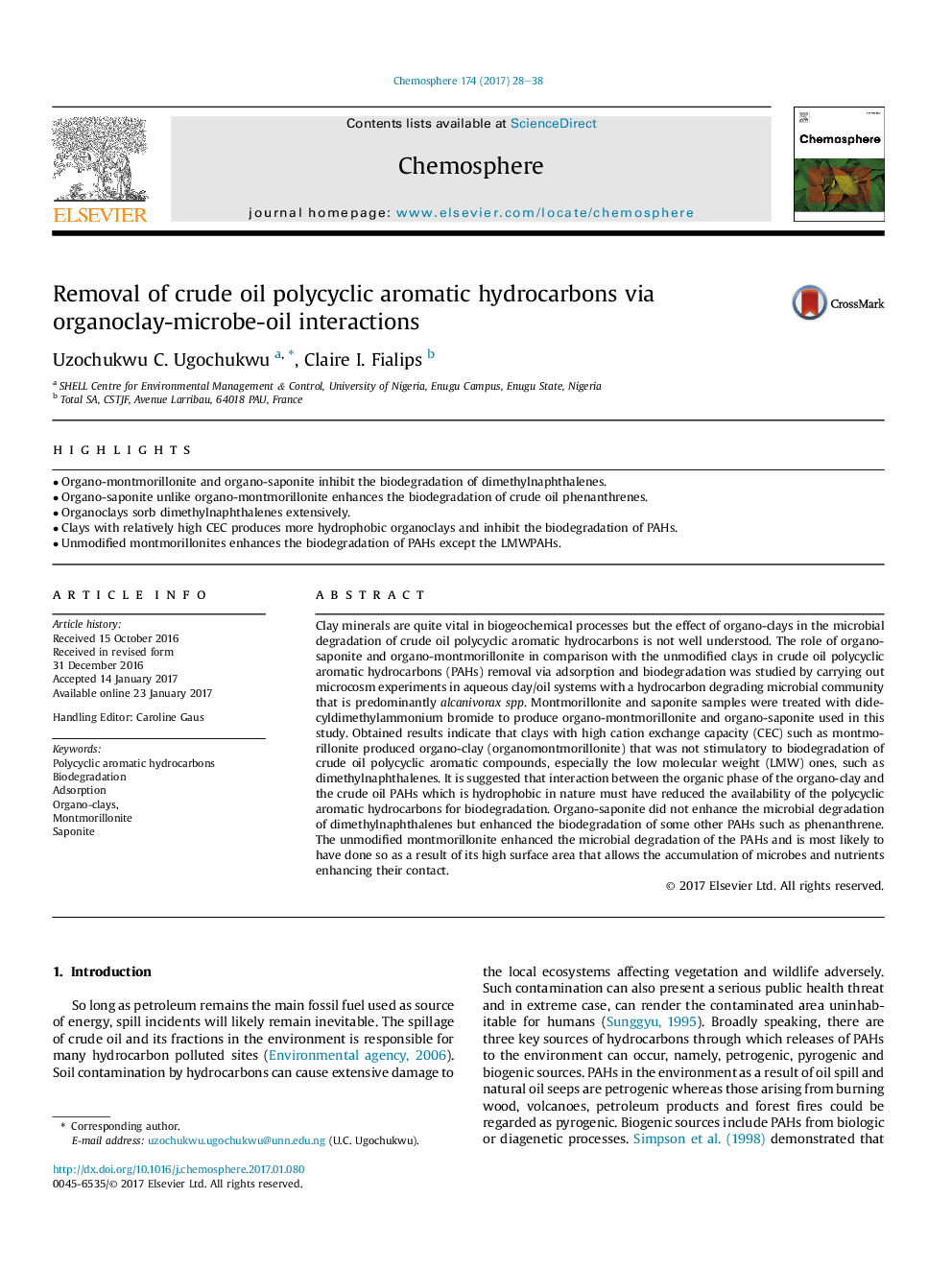| کد مقاله | کد نشریه | سال انتشار | مقاله انگلیسی | نسخه تمام متن |
|---|---|---|---|---|
| 5747340 | 1618797 | 2017 | 11 صفحه PDF | دانلود رایگان |

- Organo-montmorillonite and organo-saponite inhibit the biodegradation of dimethylnaphthalenes.
- Organo-saponite unlike organo-montmorillonite enhances the biodegradation of crude oil phenanthrenes.
- Organoclays sorb dimethylnaphthalenes extensively.
- Clays with relatively high CEC produces more hydrophobic organoclays and inhibit the biodegradation of PAHs.
- Unmodified montmorillonites enhances the biodegradation of PAHs except the LMWPAHs.
Clay minerals are quite vital in biogeochemical processes but the effect of organo-clays in the microbial degradation of crude oil polycyclic aromatic hydrocarbons is not well understood. The role of organo-saponite and organo-montmorillonite in comparison with the unmodified clays in crude oil polycyclic aromatic hydrocarbons (PAHs) removal via adsorption and biodegradation was studied by carrying out microcosm experiments in aqueous clay/oil systems with a hydrocarbon degrading microbial community that is predominantly alcanivorax spp. Montmorillonite and saponite samples were treated with didecyldimethylammonium bromide to produce organo-montmorillonite and organo-saponite used in this study. Obtained results indicate that clays with high cation exchange capacity (CEC) such as montmorillonite produced organo-clay (organomontmorillonite) that was not stimulatory to biodegradation of crude oil polycyclic aromatic compounds, especially the low molecular weight (LMW) ones, such as dimethylnaphthalenes. It is suggested that interaction between the organic phase of the organo-clay and the crude oil PAHs which is hydrophobic in nature must have reduced the availability of the polycyclic aromatic hydrocarbons for biodegradation. Organo-saponite did not enhance the microbial degradation of dimethylnaphthalenes but enhanced the biodegradation of some other PAHs such as phenanthrene. The unmodified montmorillonite enhanced the microbial degradation of the PAHs and is most likely to have done so as a result of its high surface area that allows the accumulation of microbes and nutrients enhancing their contact.
Journal: Chemosphere - Volume 174, May 2017, Pages 28-38